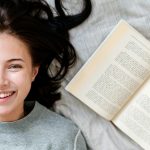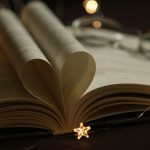Mario Livio is an astrophysicist who worked for 24 years with the Hubble Space Telescope. He is a bestselling author of seven previous books, including The Golden Ratio and Brilliant Blunders.
Jack Szostak is a professor of chemistry at the University of Chicago, leading the Center for the Origin of Life. He shared the 2009 Nobel Prize for Physiology or Medicine.
Below, co-authors Mario and Jack share five key insights from their new book, Is Earth Exceptional?: The Quest for Cosmic Life. Listen to the audio version—read by Mario—in the Next Big Idea App.

1. How did life start here, and does it exist elsewhere?
Two of the most intriguing questions in science today are: How did life on Earth begin? and, Is there life elsewhere in the universe? Remarkably, although laboratory studies of the origin of life typically explore the microcosm while astronomical quests for extraterrestrial life examine the macrocosm, the attempts to answer these questions have an intertwined, symbiotic relationship.
In fact, success in one serves as a powerful motivational source for the other. The reason is simple. If biochemists can delineate a clear path from pure chemistry to a living cell in the lab, nature could do it, too. Similarly, if astronomers detected an extrasolar planet with unambiguous signs of life, this would suggest that once the conditions are favorable, the emergence of life from chemistry may be inevitable, which would embolden origin-of-life studies.
2. The chicken or the egg?
One of the main characteristics of life as we know it is its self-referential, recursive nature. Take, for instance, the relationship between two of the main components of life: the nucleic acids, RNA and DNA, and proteins. RNA and DNA are responsible for storing operational instructions and the information that must be passed on from generation to generation. Proteins are the real workhorse molecules of life, carrying out most of the biochemical functions of the cell. But RNA and DNA are the agents that encode the information needed for the construction of proteins, while at the same time, the assembly of RNA and DNA themselves requires proteins.
For many years, this type of circular correlation with current life has convinced many scientists that life could only have emerged through an almost miraculous chemical accident. So, which came first, nucleic acids or proteins? The answer came from the stunning discovery that RNA could also act as a protein enzyme. That is, it could enhance and catalyze chemical reactions just like a protein enzyme. In principle, RNA could act as both the chicken and the egg—it could even catalyze its own synthesis! The implications of this discovery were astounding: the origin of life might come down simply to the origin of a self-replicating RNA molecule. It was this realization that led to the model of an early “RNA World” on Earth.
3. How can we study something that happened so long ago?
Since we can’t observe the emergence of the first life on Earth, or even the environment of the early Earth, is the study of life’s origins even a legitimate subject of scientific inquiry? This question arises frequently, but we believe that the question carries overly pessimistic assumptions.
“What we can, and most likely will know, is how life might have begun.”
For example, we know that the laws of physics and chemistry haven’t changed since our sun and planet first formed, so any model of how life began must be consistent with those laws. Moreover, we know a lot and are learning more every year about how stars and planets form, including our own Sun and Earth. Astronomical and geological studies combine to tell us that the Earth was at first so hot as to be molten, and yet we have only to look around to see that the Earth is now reasonably clement. So, we know that the Earth cooled over time, and from the laws of physics, we can estimate how long it took until our planet cooled enough to have liquid water and interesting chemistry on its surface.
The possibilities expand exponentially as we delve ever more deeply into that interesting chemistry. Still, we can prune the branches of that tree of possibilities by requiring that proposed reactions truly work in laboratory experiments. Finally, we have to be realistic about the goals of our studies, for we cannot expect to know exactly how life began on the young Earth. What we can, and most likely will know, is how life might have begun, in the sense of a de-tailed step-by-step pathway in which every chemical process and geological scenario is realistic and consistent with everything else we know. This is the achievable goal of Origin of Life research.
4. When the pieces start to fit together…
Studying the Origin of Life often seems like trying to solve a gigantic jigsaw puzzle. Innumerable chemical reactions could have occurred on the early Earth, so how do we know where to start? Which chemical processes and transformations were relevant to the Origin of Life, and which are mere distractions?
We begin with a relatively small number of starting materials, molecules as simple and abundant as water, carbon dioxide, nitrogen, methane, cyanide, etc. The end of our wanderings through chemical space must be the building blocks of biology—a relatively small number of key chemicals.
The problem lies in between those simple beginnings and the simple ending, since in that intermediate space, the number of reactions and compounds can seem immeasurable. Consequently, studying the synthesis of a single compound in isolation cannot tell us whether that compound or its synthesis might be important or could be a red herring. What we look for, therefore, are patterns that link independent findings together.
It is truly a magical moment when a set of seemingly unrelated discoveries suddenly start to fit together into a coherent picture that is, in turn, a fragment of the larger tapestry. As an example, a certain organic chemical was recently discovered to play a remarkably effective role in the chemistry of RNA copying. This compound had never before been suggested to participate in the origin of life, and there was no reason to think that it could have been synthesized in a plausible manner on early Earth. Yet, shortly after discovering its possible role in RNA replication, not one but two ways in which it could have been synthesized were discovered.
“What we look for are patterns that link independent findings together.”
Most surprisingly, those synthetic pathways were very closely related to routes leading to the synthesis of the building blocks of RNA themselves. Thus, there appears to be an unexpected connection between the synthesis of the building blocks of RNA, their activation, and the replication of RNA. These are the types of relations we look for as we construct a path from chemistry to biology.
5. Don’t guess. Search!
Astronomical discoveries in the last three decades have shown that our Milky Way galaxy may be teeming with Earth-size planets orbiting in the so-called Habitable Zone of their host stars. The Habitable Zone is that range of distances from the central star in which the surface of a rocky planet is neither too hot nor too cold so that the planet can sustain liquid water on its sur-face (and therefore can potentially harbor life).
The fact that there may be as many as a billion such planets in the Milky Way alone has led many people to assume that extrasolar planets must exist that harbor life. This conclusion, however, is at best premature. We have not discovered any life outside of the Earth, so we have no idea what the probability for life is to emerge on a planet, even if conditions are ideal. In fact, the latest findings from origin-of-life research suggest that separate geochemical scenarios need to be linked together precisely in the right sequence to produce the building blocks of life in the same place at the same time.
At the moment, we cannot calculate the probability of the entire sequence of steps occurring, so it is impossible to conclude whether the appearance of life on Earth was inevitable or a freak chemical accident. To attempt to answer the question of whether extraterrestrial life exists, we have no choice but to aggressively search for it using advanced astronomical observations.
To listen to the audio version read by co-author Mario Livio, download the Next Big Idea App today:
































